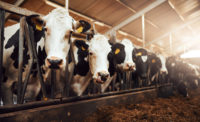Small is big again

For years, the meat supply chain has been dominated by the largest of the large processors. It has been a combination of steady growth and unregulated acquisitions that have put the bulk of the raw meat supply in the hands of a handful of corporations. And things worked, more or less. The meat supply chain was able to provide readily available, affordable protein to the public. Those large processors were able to dominate the industry, but they left enough niches that others could fill.
As it turned out, there was plenty of opportunity in those niches. Small and mid-sized companies could be nimble and capitalize on changing consumer tastes to produce new products. They found audiences, whether it was in their hometown or home region. Small processors who had their own slaughter capabilities were able to harvest enough animals to create a steady, independent meat supply.
I was impressed by that part of the industry when I first started writing about it. Independent Processor launched more than a decade ago with the notion that there are exciting things happening in those niches, and they deserved proper coverage. Sure enough, more and more consumers have discovered there is more to the meat industry than what they realized. As people began to seek out locally grown products, or grass-fed beef, or free-range chicken, or farmers’ markets or regenerative agriculture, the best-kept secret in the meat industry began to get out: Small processors are pretty interesting.
New initiatives by the USDA and Biden Administration indicate a level of interest in the health of the small meat sector that we’ve really not seen before. Hundreds of millions of dollars in state and federal grands have been offered to help small meat companies expand, and the Administration has stated its goal of increasing competition in the meat industry. Those steps include, according to the USDA, “holding meatpackers accountable by revitalizing the Packers and Stockyards Act, issuing new rules on ‘Product of USA’ labels, and developing plans to expand farmers’ access to new markets.”
“The COVID-19 pandemic led to massive disruption for growers, food workers, and consumers alike. It exposed a food system that was rigid, consolidated, and fragile. Meanwhile, those growing, processing and preparing our food are earning less each year in a system that rewards size over all else,” said Agriculture Secretary Tom Vilsack. “To shift the balance of power back to the people, USDA will invest in building more, better, and fairer markets for producers and consumers alike.”
It remains to be seen whether or not the agency will be able to accomplish these goals or if they will get bogged down in Washington red tape. But it is clear that, after years of operating in the niches, the efforts of small and mid-sized meat companies have been noticed.
Sam Gazdziak
gazdziaks@bnpmedia.com
Looking for a reprint of this article?
From high-res PDFs to custom plaques, order your copy today!







